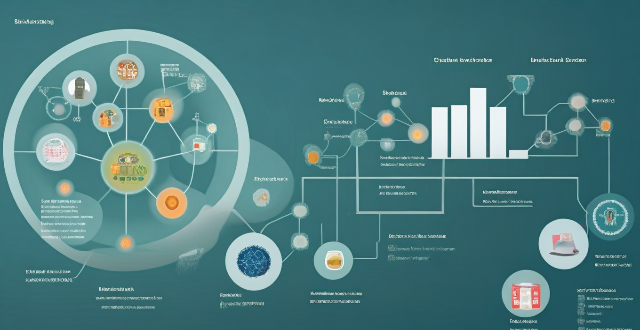Data Decision

Can AI replace human decision-making in complex situations ?
Artificial intelligence (AI) has made significant strides in recent years, leading to discussions about its potential to replace human decision-making in complex situations. While AI possesses certain advantages, such as speed and accuracy, it still faces limitations that prevent it from fully replacing humans in decision-making processes. Advantages of AI in decision-making include speed and efficiency, accuracy and consistency, and scalability. However, AI also has limitations such as lack of creativity, ethical considerations, and interpretability. Examples of complex situations where AI may not replace human decision-making include medical diagnosis, legal judgments, and business strategy. In conclusion, while AI has the potential to assist humans in decision-making processes, it cannot fully replace them in complex situations. The combination of AI's analytical capabilities and human creativity, ethics, and intuition will likely lead to better outcomes in these scenarios.

How does the threat of climate change influence our cognitive processes and decision-making ?
The influence of climate change threat on cognitive processes and decision-making is significant. It can affect perception of risk, trigger emotional responses, and alter information processing. Additionally, it shifts priorities in decision-making, necessitates long-term planning, and requires collaboration among various stakeholders.

What are the benefits of using data analytics in education ?
Data analytics has become an increasingly popular tool in education, offering benefits such as improved student performance through personalized learning and early intervention, enhanced teaching practices with curriculum development and professional development, and better decision making with evidence-based decision making and transparency. As technology advances, data analytics is likely to become an even more integral part of the educational landscape.

What are some best practices for integrating climate risk into investment decision-making processes ?
As climate change continues to affect financial markets, integrAs climate change continues to affect financial markets, integr decision-making processes is becoming integrating climate risk into investment decision-making processes is becoming increasingly important. Best practices for doing so include assessing climate risk in the investment process, incorporating climate risk into investment analysis, monitoring and reporting on climate risk exposure, and collaborating with other stakeholders. These practices help investors manage climate risk effectively and make informed investment decisions that align with sustainability goals.

How do unlimited data plans differ from traditional data plans ?
Data plans are essential for internet usage, with unlimited and traditional data plans being the main types. Unlimited plans offer no data limits, predictable costs, and suit heavy users, while traditional plans have data limits, variable costs, and suit light users. The key differences include data limits, cost, and usage scenarios. Choosing the right plan depends on individual needs and usage patterns.

How do we ensure that climate decisions are based on sound science ?
The text discusses how to ensure that climate decisions are based on sound science. It suggests a multi-faceted approach that includes ensuring data quality and integrity, promoting interdisciplinary collaboration, and enhancing public understanding and involvement. The author emphasizes the importance of rigorous research, maintaining data integrity, encouraging collaboration between different fields, integrating traditional knowledge and local expertise, educating the public about climate science, and encouraging public participation in decision-making processes. By adopting these strategies, we can make informed decisions that effectively address the challenges posed by climate change.

What role should public opinion play in climate decision-making ?
The text discusses the importance of public opinion in climate decision-making, emphasizing that it can influence policymakers, shape public discourse, and drive action towards addressing climate change. The author outlines ways to influence public opinion, such as education, advocacy, media, and personal action.

How has climate data analysis evolved over the past decade ?
Over the past decade, climate data analysis has seen significant advancements in various aspects, including improved data collection through advanced satellite technology and ground-based measurements, advanced modeling techniques such as complex climate models and data assimilation, enhanced computational power with supercomputers and cloud computing, big data analytics involving machine learning and AI, open data initiatives promoting public availability of data and collaborative platforms, and an interdisciplinary approach integrating multiple fields and engaging the public. These developments have revolutionized our understanding of the Earth's climate system and paved the way for more accurate and comprehensive climate research and policy-oriented decision support tools.

Does exercise influence executive functions, such as decision-making and problem-solving ?
Exercise has a positive impact on executive functions, including decision-making and problem-solving. Regular physical activity can enhance cognitive functioning, risk assessment, self-control, creative thinking, working memory, and attention, leading to improved performance in these areas. Incorporating exercise into your lifestyle can benefit both your physical and cognitive health.

How do I know if I need an unlimited data plan for my smartphone usage ?
Do you need an unlimited data plan for your smartphone usage? Consider factors such as data usage, cost, network coverage, and family plans to make an informed decision.

How has the use of wearable technology impacted sports data analysis ?
Wearable technology has revolutionized sports data analysis by enabling real-time performance monitoring, injury prevention, training optimization, and strategic decision-making. Athletes can receive immediate feedback on their performance metrics, while coaches can tailor training loads and develop game plans based on accurate data. Wearables also aid in injury prevention and recovery tracking. Fan engagement is enhanced through interactive experiences and broadcast enhancements. Future developments include advanced analytics and integration with other technologies. Overall, wearable technology has significantly transformed sports data analysis for the betterment of athletes' health, performance, and team strategies.

How can educational institutions use data analytics to improve student outcomes ?
Educational institutions can use data analytics to improve student outcomes by identifying areas of focus such as performance tracking, curriculum analysis, and student engagement. Implementing data-driven strategies like personalized learning, predictive analytics, and resource allocation can further enhance student success. Continuous evaluation and collaboration are key to measuring success and making necessary adjustments.

How does climate change exacerbate gender inequality in access to resources and decision-making ?
Climate change exacerbates gender inequality by disproportionately affecting women and girls in access to resources and decision-making. Women often have limited access to resources such as water, food, and land due to cultural norms, lack of education, and poverty. They also have limited participation in decision-making processes due to cultural norms and lack of education. To address these issues, it is important to prioritize gender equality in climate change adaptation and mitigation strategies by ensuring that women's voices and experiences are taken into account when making decisions.

How do data protection regulations apply to artificial intelligence and machine learning ?
The article discusses the relationship between data protection regulations and artificial intelligence (AI) and machine learning (ML). It highlights that these technologies require large amounts of personal data, which raises concerns about privacy and security. The article outlines key considerations for ensuring compliance with data protection regulations, such as transparency, accountability, automated decision-making, and data minimization. It also provides best practices for organizations to implement AI/ML systems while maintaining compliance with data protection laws.

How can climate decisions be made more effectively ?
Effective decision-making in the face of climate change is crucial for mitigating its impacts and adapting to its inevitable consequences. Here are some strategies to enhance the efficacy of climate decisions: Prioritize evidence-based approaches, including gathering reliable data through thorough research and advanced technology, and encouraging transparent communication by opening channels for dialogue and publishing data accessibly. Promote interdisciplinary collaboration by integrating expertise from diverse fields and supporting policy coherence through aligning policies and international cooperation. Engage stakeholders and the public by fostering participatory processes such as public consultations and involving NGOs and civil society, as well as educating and empowering communities through awareness campaigns and capacity building. Finally, implement resilience and adaptation measures by anticipating changes through modeling scenarios and risk assessments, and creating flexible policies through adaptive management and iterative approaches. By focusing on these key areas, we can make more effective climate decisions that stand a better chance of mitigating harm and fostering sustainability.

What is data privacy ?
Data privacy is the protection of personal information from unauthorized use. It's important for individual rights, building trust, legal compliance, and risk mitigation. Principles include data minimization, anonymization, encryption, transparency, consent, access control, retention, integrity, and accountability. Best practices involve regular audits, employee training, updating policies, secure systems, and response plans for data breaches.

How much does an unlimited data plan usually cost ?
Unlimited data plans vary in cost from $60 to $105/month for one line, depending on the provider and included features. Factors affecting the final cost include the number of lines, device payment plans, taxes and fees, autopay discounts, and promotions. It's important to compare plans and consider any additional costs before choosing an unlimited data plan.

How can we involve vulnerable populations in climate decision-making processes to protect their rights ?
The text discusses the importance of including vulnerable populations, such as the poor, elderly, children, and those with disabilities, in climate decision-making processes. It highlights the reasons for their inclusion, strategies to facilitate their participation, effective communication channels, policy recommendations, and success stories. The text emphasizes the need for accessibility, language support, child-friendly approaches, financial support, community workshops, door-to-door outreach, social media campaigns, and art and storytelling to reach out to these populations. It also suggests legal mandates, funding priorities, and monitoring and evaluation as policies to support inclusivity. Overall, the text argues that involving vulnerable populations in climate decision-making is crucial for equity, diversity of perspectives, and effective solutions.

Can AI provide objective data to support or refute controversial calls in sports ?
AI can provide objective data to support or refute controversial calls in sports by analyzing vast amounts of data, capturing high-resolution images and precise measurements, processing data quickly, and making decisions based on consistent criteria. Examples of AI applications in sports include instant replay reviews, performance tracking, ball trajectory analysis, decision support systems, and bias detection and mitigation. However, challenges such as integration with current systems, human oversight, cost and accessibility, ethics and privacy must be considered to ensure responsible and effective implementation of these technologies.

How can data analytics help identify areas where students may need additional support ?
Data analytics is a crucial tool in education as it helps identify areas where students may need additional support. It involves collecting and analyzing large sets of data to inform decision-making processes. Data analytics can be used to analyze student performance, track progress over time, and analyze behavior. Once areas for additional support are identified, personalized learning plans can be developed, collaboration between stakeholders can be facilitated, and continuous monitoring and adjustment can take place. Overall, data analytics provides valuable insights into student needs and promotes academic growth and success.

How can data analytics be used to measure teacher effectiveness and performance ?
Data analytics can be a powerful tool for measuring teacher effectiveness and performance. It allows administrators, educators, and policymakers to gain insights into various aspects of teaching and learning, leading to more informed decision-making and improvements in educational outcomes. Here's how data analytics can be leveraged to assess teacher performance: 1. Identifying Key Performance Indicators (KPIs): To begin with, it is essential to identify the key performance indicators that will be used to measure teacher effectiveness. These KPIs may include student achievement scores on standardized tests, classroom observations and evaluations, student engagement and participation levels, parent and student feedback surveys, and teacher attendance and professional development activities. 2. Collecting and Analyzing Data: Once the KPIs are established, data needs to be collected from various sources, such as student records, observation reports, and survey responses. This data should then be analyzed using statistical methods and data visualization techniques to identify patterns, trends, and correlations. 3. Interpreting Results and Making Informed Decisions: After analyzing the data, it is crucial to interpret the results and make informed decisions based on the findings. This process involves considering contextual factors, such as school resources, student demographics, and external influences, when evaluating teacher performance. 4. Continuous Monitoring and Feedback Loop: Finally, it is essential to establish a continuous monitoring system and feedback loop to ensure ongoing improvement in teacher effectiveness. This involves regularly collecting and analyzing data, providing constructive feedback to teachers, and implementing changes based on the insights gained from the data.

How can climate data analysis inform sustainable development goals and practices ?
**Summary:** Climate data analysis is crucial for understanding environmental systems and shaping sustainable development goals (SDGs) and practices. It helps identify trends, inform policy decisions, assess environmental impacts, and guide sustainable agriculture, urban planning, and disaster risk reduction. By integrating climate data into development frameworks, we can ensure that current actions do not compromise future generations' ability to meet their needs and aspirations.

How does data encryption affect computer performance ?
Data encryption is crucial for securing data but can affect computer performance by increasing processor load, memory usage, disk I/O, network latency, and reducing battery life.

Why is data encryption important for online security ?
Data encryption is crucial for online security, protecting dataData encryption is crucial for online security, protecting data the financial impact of breaches It has evolved from ancient uses to a critical tool in today's digital landscape, with AI optimizing key management and enhancing algorithms.

What are the requirements for obtaining consent under data protection laws ?
To obtain valid consent under data protection laws, organizations must adhere to specific requirements. These include providing clear and concise information about the data processing activities, ensuring that consent is freely given without pressure or coercion, making the consent specific and unambiguous for each purpose of data processing, informing individuals about their rights under data protection laws, and maintaining ongoing transparency and open communication. By following these guidelines, organizations can protect individuals' rights and privacy while building trust with their customers.

What are the benefits of having an unlimited data plan ?
An unlimited data plan offers benefits such as no data caps or overage charges, the ability to stream videos and music without worrying about data usage, using multiple devices simultaneously, working from anywhere, enjoying online gaming and social media, and better value for money.

How do data protection regulations handle sensitive personal data ?
Handling sensitive personal data under data protection regulations requires strict adherence to principles such as consent, minimization, purpose limitation, and security. Regulations like the GDPR in the EU, CCPA in the US, and PIPEDA in Canada impose specific conditions for processing sensitive information. Organizations must adopt best practices including assessment, privacy impact assessments, employee training, access controls, and monitoring to ensure compliance and protect individuals' privacy rights.

What is the difference between data privacy and data protection ?
The text discusses the difference between data privacy and data protection, emphasizing that understanding these concepts is crucial for managing personal information responsibly. Data privacy focuses on individual rights to control personal information, while data protection emphasizes organizational measures to safeguard that information. Both are essential for building trust and ensuring responsible data handling.

What role do data protection officers play under data protection laws ?
Data protection officers (DPOs) are crucial for ensuring compliance with data protection laws in organizations. They advise on compliance, develop policies, ensure adherence to regulations, educate stakeholders, and act as a point of contact for personal data requests.

Can data encryption prevent data breaches and cyber attacks ?
Data encryption is a crucial security measure that can significantly reduce the risk of data breaches and cyber attacks by converting plain text into an unreadable format. However, it does not completely eliminate the risk of data breaches and cyber attacks. Encryption works through complex algorithms to scramble data so that it appears as random characters, requiring a secret key (or password) to decrypt the data back into its original form. There are two main types of encryption: symmetric and asymmetric. While encryption offers benefits such as confidentiality, integrity, authentication, and non-repudiation, it also has limitations including key management challenges, performance overhead, compatibility issues, human error, and advanced persistent threats (APTs). Therefore, organizations should implement other security measures such as firewalls, intrusion detection systems, regular security audits, and employee training programs to minimize the risk of cyber threats.